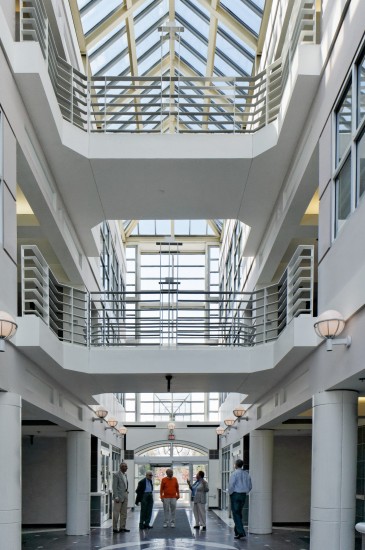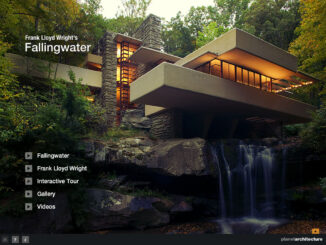
Earlier this year, an architect very dear to my heart peacefully passed away at his home in Berkeley, California. The late Don M. Hisaka, a world renowned architect, was my professor at UC Berkeley, a former boss, a long-time mentor, and a friend who taught me many things about life.
During the twenty plus years that I knew Don, I learned about having the right proportions in design, what makes design great and buildable, and the ins and outs of the architectural practice as well as the design process. But aside from all that, I also learned about basic human values. The stories and tidbits that Don shared with me throughout the years all came down to one thing–the importance of having integrity as a responsible human being.

I must also mention that having Don in my life came with a bonus–Mich, his wife of more than sixty years and who survives him. I am so lucky to have Mich in my life. She is one of the kindest and most giving persons. She was always there not only for Don, but also for all of us working at his offices. Her presence had a constant calming effect on our stress levels and her surprise snacks, without a doubt, brought smiles to our faces. Together, Don and Mich made a super couple.

While attending Don’s memorial service back in March this year, I had the chance to meet people who worked for Don during the Cambridge/Boston years. We traded unforgettable stories about Don–stories from the late 1980s, and stories from the 1990s when I worked with Don during the Berkeley years in which he had his last formal office. Despite our different experiences, we all concluded that Don had made a huge and positive impact on our lives, both personally and professionally.



Every one of his associates whom I met throughout the years told me that Don always got to work before everyone and finished late, was tough as nails, and never backed down when he was arguing with his clients or contractors. I think I had it easy in my days working with Don. By the time Don started working in California, he typically came to the office mid-morning, much later than his previous hours when he was running a full office; he called me every morning for five years to go over the day’s “to do” list (he eased up in the two years following–thank goodness!); he never raised his voice; and he occasionally snuck out for a game of tennis. I learned that what did remain consistent throughout the years was Don’s tenacity for finding an elegant solution for each design problem (quoting former Associate John McDonald from the Cambridge office), his easy way of connecting with people, and of course his love for Porsches.

Back in the spring of 2011, I had a chance to meet some of Don’s former associates and clients. The Cleveland Artists Foundation organized and hosted a wonderful retrospective exhibit of Don’s work created during his Cleveland years. I am so grateful that I was able to travel to Cleveland and participate in a weekend full of activities honoring Don.



Saturday morning started off with a quick tour of some of Don’s projects: the first home that he built for his family, a remodel of the Thwing Student Center at Case Western University, and the Signature Square Office Park. It was exciting for me to finally see the projects that I only knew of through photos and stories.

Another highlight of the day was the panel discussion between Don and his clients and peers. It was held at the Cleveland Artists Foundation, alongside the retrospective exhibit. It was truly a touching moment to see Don surrounded by old friends, former employees from his Cleveland office, and clients from around the world. Having heard about many of the participants while I worked for Don, I was looking forward to hearing their “Don stories.”

Here are some of the insights that I gained that afternoon:
Making an Impact on His Clients:
“Don shaped our home, and thereafter me.”
A quote from a letter written by Dr. Toby Cosgrove, CEO of Cleveland Clinic, client and long-time friend.



Impressing Even the Young Ones:
Back in 1965, architect Mr. Graham Gund introduced Don to his sister, Ms. Agnes Gund, when she was looking for an architect to design a vacation home for her family. Don ended up designing the vacation home, siting it so that the building had a view to three ponds in the middle of a 150-acre forest, and keeping every single tree except for one. Ms. Gund described Don’s architectural design as “bringing both light and nature into the house.” The fact that the home wins the title of the “favorite home” of Ms. Gund’s twelve grandchildren serves as living proof of how Don’s buildings transcend time and different generations.


Hiring a Famous Architect:
In the late 1960s when Ms. Margaret Black was tasked with finding a famous architect to build a new Mansfield Arts Center for the Mansfield Arts Guild in Ohio, she called architects Mr. I.M. Pei and Mr. Minoru Yamasaki, the latter who was busy designing New York’s Twin Towers of the World Trade Center at the time. It was Mr. Yamasaki, one of Don’s former bosses, who “highly recommended” him and thus convinced Ms. Black and the Building Committee to contact Don. What came about was a “little jewel” of a building that has withstood the test of time and numerous rotating exhibits, even forty plus years later.



Hiring a Famous Unknown Architect:
When Mr. J.W. Kaempfer, Chairman of the McArthurGlen Group, went looking for an architect in the 1980s to design his office headquarters for The Kaempfer Company in Washington D.C., he received a recommendation from Mr. Peter Walker, a landscape architect from Harvard. And thus began a thirty plus year-relationship between Mr. Kaempfer and Don. Their projects ranged from houses and high-rise buildings to a designer outlet mall in Scotland. In a conversation with architect Mr. I.M. Pei, Mr. Pei told Joey that Don Hisaka is “the most famous, unknown architect.”






Dealing with Problematic Contractors:
Architect Mr. Jim Gibans, former associate in the Cleveland office, recalled one of his most memorable conversations with Don when he was complaining about a problematic plumbing contractor:
“Jim, there are problems and there are solutions, but there are no excuses.”
Don M. Hisaka

On the last day of the celebratory weekend, I went on a tour of Don’s synagogue project, Temple B’nai Jeshuren in Pepper Pike, Ohio, built in 1982. The photos in our office brochure did not do justice to the building. I was in awe of the light-filled spaces, the extra-long spans of concrete work, and the brilliant colors within the all-white exterior facades. As one walks into the main sanctuary, one can see a sea of purple seats highlighted by warmly lit white walls and supplemented by beautifully exposed ceiling beams.






My short weekend in Cleveland was one of my most memorable trips. It was such a treat for me to take part in a celebration of Don’s achievements along with his family and good friends. Even though I’ve heard them a million times from Don, his stories about how he wanted to escape from working in his parents’ potato fields, how he went from working as a houseboy to studying in U.C. Berkeley, how he was able to finish Harvard because his wife supported him and the University gave him a scholarship, I will never get tired of those stories.
Don, thank you for telling me your stories, teaching me about architecture and life, and making a positive impact on my life. For those of us who have had the good fortune of knowing Don, we will always remember his legacy and contribution to the architecture field and the built environment.
If you would like to hear some of Don’s stories, go to http://engagedscholarship.csuohio.edu/crohc000/256/ to listen to his interview with Ms. Nina Giban, the curator of the retrospective exhibit of Don’s work during the Cleveland years, discussing his life and work among other things.





We are looking for literature/monography about Don Hisaka. Do you have any recommandations? We love his architecture and would love to learn more about him.
Mignon, my name is Peter Herb, and Don was houseboy for my widowed mother in Berkeley when I was 7 and my brother was 9. We lost track of him for years, but we found each other from a mutual friend when he moved back to Berkeley. Mom, my brother Mike, and I got together with Don at the Claremont Hotel shortly before my mother died 20 years ago. I knew nothing about Don’s work until attending his memorial service two years ago. My granddaughter is getting married in Cleveland on June 20, and I am eager to tour some of Don’s projects while I am there. Any suggestions for me in that regard?
Love the photographs. Oliver and you have a flair for architectural photography. Very professional shots. I’m glad I had several opportunities to chat with Don at your parties.